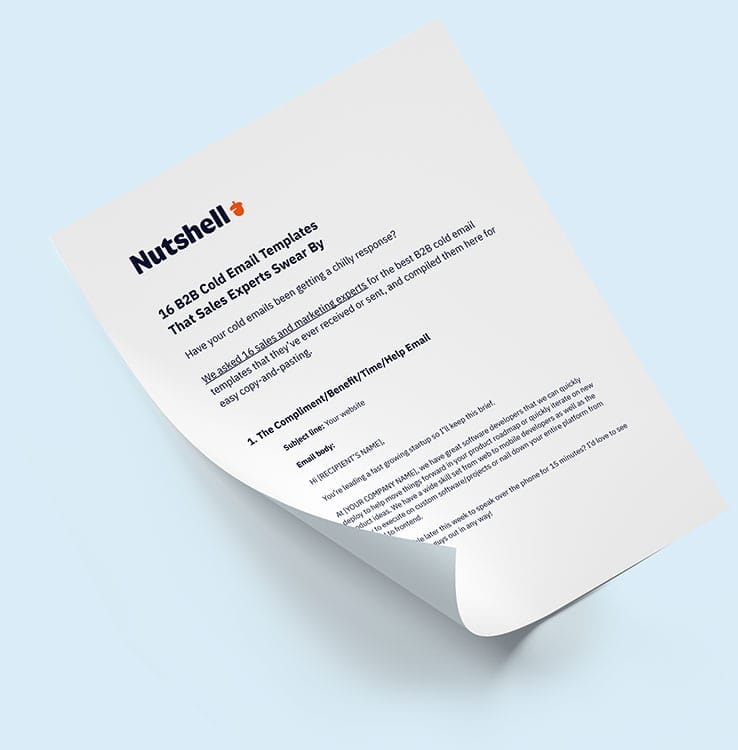
Email fatigue is real—buyers are overwhelmed by outreach that feels generic, frequent, or irrelevant, leading to lower engagement and more unsubscribes.
But while automation makes scaling easy, overuse without personalization can damage brand perception and hurt long-term results.
The takeaway? B2B sales teams should focus on quality over quantity—crafting thoughtful, timely messages that provide value and respect the prospect’s inbox.
The verdict is in: emails cause stress. And sales emails can feel extra stressful for a number of reasons:
Once you add other modern concerns to the pool—inflation, housing, health, and climate to name just a few—it’s easy to see why so many people just ignore emails that would have previously captured their attention.
In 2025, prospects feel more stress than ever when they open their inboxes. And so do you as a sales professional, whether you realize it or not.
Even before the pandemic, only 8.5% of emails got a response, making it a challenging channel for even seasoned sales reps.
Here’s how to move in the right direction toward making things right for yourself and your prospects.
Summarize this content with AI:
Before you can fix the problem with prospect email fatigue, you have to know what’s causing it.
In modern email culture, there are two types of stressors I feel as a decision-maker whenever I open my inbox: life stressors and work stressors.
Work stressors are related to my job and career, and can be controlled or solved in part by the products and services many sales reps have to offer. Life stressors include everything else and are unlikely to be alleviated by a sales email.
Here are some of the leading causes of email stress for your prospects:
There are two sides to every story. If we’re considering the recipient’s reasons for struggling with email, we need to think of the sender as well.
Sales reps say they’re struggling, too—not only with the state of the world but with keeping their approach fresh and innovative. You want to be creative and helpful; you want to close more deals, create more value, and make more money.
It’s not always an easy road, but it can be a simple one. Here are a few mistakes to avoid along the way.
Learn the email tactics that B2B sales pros use to hook their customers.

Now that you know where prospects are coming from and what you can do to freshen things up, here are a handful of tactics you can implement to improve both the quality of your emails and your overall sales skill set.
There are plenty of unconventional approaches you can use to stand out in crowded inboxes, such as integrating physical touches like digital mailers and embracing the underrated art of meme selling.
It’s always easier to be different than it is to be better, and it’s certainly the approach more likely to get you noticed (and remembered). Quality can be a very subjective concept, but uniqueness—well, there’s no comparison to be made.
Still not sure where exactly to get started? Nutshell’s got you covered. Download the complete guide to writing MUCH better sales emails, and email growth@nutshell.com if you have any other sales outreach-related questions to run by our team.
Watch for declining open rates, lower click-through rates, and increased unsubscribe rates compared to your benchmarks. If engagement drops while your other channels remain stable, it’s email-specific fatigue. Also monitor spam complaints and prospects who go silent mid-conversation—these signal you’re overwhelming their inbox.
Use customizable email templates as your foundation, then layer in AI-powered personalization tools to handle research and dynamic content insertion. Segment your audience by persona and account value—reserve high-touch personalization for top prospects while using semi-personalized templates for lower-priority leads. Tools like Nutshell’s email sequences automate follow-ups while maintaining relevance.
Yes, but modernize your approach. The issue isn’t sequences themselves—it’s what you’re saying and when. Review your messaging for relevance and value, adjust your cadence based on engagement signals, and ensure each touchpoint provides something new. If a sequence consistently underperforms after testing, pause it and try a different angle or channel.
After 5-7 touchpoints over 2-3 weeks with zero engagement, send a breakup email. This final message acknowledges their silence, offers an easy out, and often re-engages prospects who were simply busy. If there’s still no response, move them to a long-term nurture sequence with quarterly check-ins rather than deleting them entirely.
Try multi-channel outreach: LinkedIn messages, phone calls, or even direct mail for high-value accounts. Each channel has different engagement patterns—prospects ignoring email might respond on LinkedIn. The key is varying your approach while maintaining consistent messaging. Use your CRM to coordinate touches across channels and avoid overwhelming prospects.
Are you falling off your prospects’ radars? With Nutshell’s personal email sequences, we’ll remember the follow-up for you.


Join 30,000+ other sales and marketing professionals. Subscribe to our Sell to Win newsletter!
